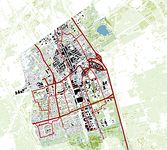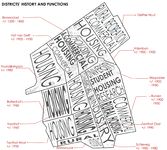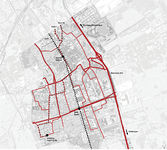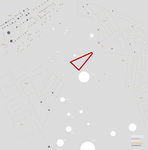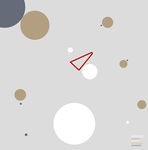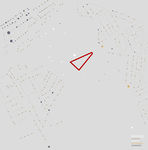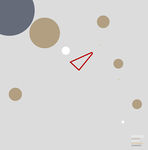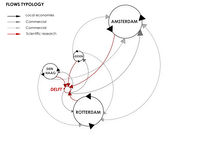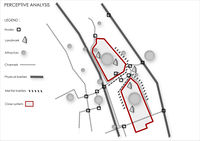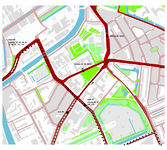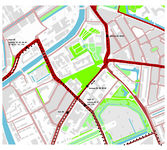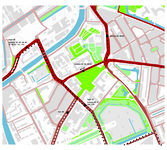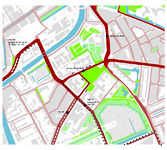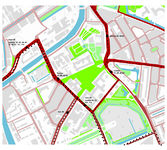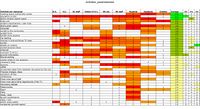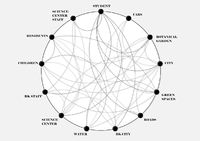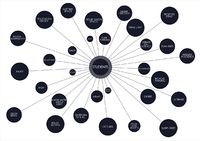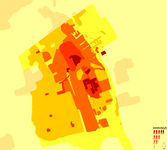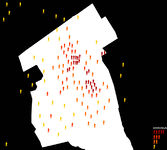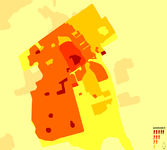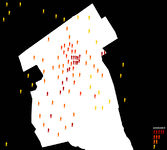atom06:Analysis
(→Green Spaces and Roads Configurations) |
|||
| Line 94: | Line 94: | ||
[http://www.google.nl/url?sa=t&source=web&cd=1&ved=0CBsQFjAA&url=http%3A%2F%2Fwww.tunoord.nl%2Farchief%2FOntwikkelingsplanTUnoordtbvbewoners041130.pdf&ei=MmF2Ts_DBIqb-gbrx7zSDA&usg=AFQjCNHs0cKMZVeLTYDpKt-YrpALxGBGyQ&sig2=IlM2XsYpAvJ39CUwuhtk1gdevelopment plan TU north, 2004] | [http://www.google.nl/url?sa=t&source=web&cd=1&ved=0CBsQFjAA&url=http%3A%2F%2Fwww.tunoord.nl%2Farchief%2FOntwikkelingsplanTUnoordtbvbewoners041130.pdf&ei=MmF2Ts_DBIqb-gbrx7zSDA&usg=AFQjCNHs0cKMZVeLTYDpKt-YrpALxGBGyQ&sig2=IlM2XsYpAvJ39CUwuhtk1gdevelopment plan TU north, 2004] | ||
| − | File:Atom6 option4a.jpg|'''Option 5''' | + | File:Atom6 option4a.jpg|'''Option 5''' where we close off both the Mijnbouwstraat and Julianalaan, redirecting traffic via the Zuidplantsoen. This will create a space where the Science Center, the Botanical gardens, the faculty of Architecture and the roads beside the student residences are bonded as one to create a city park that (along with the botanical gardens) stretches all the way to the canal de Schie. |
| − | File:Option 5a.jpg|'''Option 6'' | + | File:Option 5a.jpg|'''Option 6''' where we divert the traffic around the burial grounds via the main library and Aula. Parking is solved by underground parking at certain points. |
</gallery> | </gallery> | ||
| Line 165: | Line 165: | ||
</gallery> | </gallery> | ||
| − | |||
| − | |||
| − | |||
| − | |||
=Conclusions= | =Conclusions= | ||
Revision as of 08:29, 10 October 2011
Contents |
Objective
Initial analyses, objective site analyses to form an understanding of the physical constraints
Subjective
Subjective analysis
Interviews
To create an initial starting point for the design intervention, we need to form a understanding of the actors and their networks relating to our site. At first we conducted interviews on the site and within identified main stakeholders (link to Validators).
Network
Based on the interviews and research on plans for the area we identified a body of intermediators (see theory), on whose network we want to take a closer look.
We desided to use twitter(link) as a source of data, since many of the intermediators seem to have an active presentation in there. We want to explore the extent it is possible to actually utilise the attributes, and avatar network that the actors have already formed.
Network Analysis
After an initial observation of the site, we carried out some analysis to understand the dynamics of our project's site. We used a double cognitive approach, conducting two main types of analysis: objective and subjective.
Interviews
Initial analysis
Objective Analyses
the idea of mapping the current direct actors in the area is that we can decide on the importance of possible activities in the area at different times
figures are based on the most current statistical figures from the city of Delft regarding education and residents
Subjective Analyses
Green Spaces and Roads Configurations
We analyzed some possible configurations of expansion of green spaces in relation to roads.
Option 2 is to get rid of the Mijnbouwstraat and extend the park to the Botanical gardens and the Science Center. This will allow for functions that relate to the Science center to be effectively connected and creates the possibility for us to connect to the Botanical gardens, for which they already have a path leading to the Plantsoen.
Option 3 is to make the Julianalaan in front of the faculty of Architecture all park so the school connects better with the park and can really explore it's potential and connect with it for a new extension for it's need for space. The Botanical gardens and the Science Center will get even more traffic because of the 2-way traffic.
Option 5 where we close off both the Mijnbouwstraat and Julianalaan, redirecting traffic via the Zuidplantsoen. This will create a space where the Science Center, the Botanical gardens, the faculty of Architecture and the roads beside the student residences are bonded as one to create a city park that (along with the botanical gardens) stretches all the way to the canal de Schie.
Map users activities
- Map the users
- Map their current & possible activities
- Identify
- How to connect users
- Find matching activities
- Match the users by their activities / mix functions
- Connecting activities form the interaction and program
- The program (list of activities) is organised / mapped
Questions
- How does it change by the effect of users?
- How to map the users? Diagrammatically, with sensors etc.
Possible usergroups
- Students
- Residents
- Science center (workers, visitors, ...)
- Architecture department (tutors, personnel)
- Botanical garden
- Duwo
editable user groups and their activities and needs - table
on the basis of this table possible activities can be identified for the various users surrounding out site.
One thing that is also important is the time frame in which these activities go on. For example, in the evenings/weekends, students will not be there in large numbers, as such the program will need to adjust to whoever will be there, and to provide as needed.
On top of these we can provide optional additional activities for connecting the TU and the residents as the connection models require
These two combined will provide us with a basis for our program on our site.
Map city attractor points
mapping the busy areas in Delft during the daytime throughout the week and the weekend shows us where there are good connection points for the possible metastasis objects to attract attention and real time connect to our center platform
Conclusions
The analysis reveals that our site is an in-between space among two system that don't cooperate and interact: City system - Tu system. Our desire is that these two systems get more integrated and start to actively communicate and interact. We and some of the residents we interviewed feel this is needed to make the city unified again.
